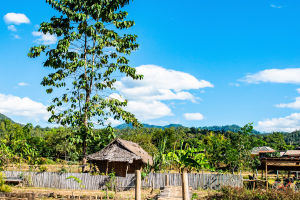Dolomites Alpine Magic
Few mountain landscapes in the world manage to feel both grand and intimate, wild and welcoming.
But the Dolomites in northern Italy somehow achieve just that. Recognized as a UNESCO World Heritage Site, this jagged, pale limestone mountain range stretches across the regions of Trentino-Alto Adige, Veneto, and Friuli Venezia Giulia.
It's a dream for outdoor lovers in every season—especially if you're looking to hike, ski, or simply enjoy slow mountain living surrounded by jaw-dropping views.
Why the Dolomites Are So Special
The Dolomites are not just another corner of the Alps—they're geologically unique. Their cliffs glow pink or orange at sunrise and sunset, a phenomenon known as enrosadira. And while you'll find iconic Alpine traditions here, the Dolomites also blend Italian and Austro-Tyrolean cultures, resulting in everything from hearty mountain dishes to bilingual signposts.
Top Outdoor Activities
1. Skiing the Dolomiti Superski Circuit
In winter, the Dolomites turn into one of Europe's most spectacular ski destinations. The Dolomiti Superski pass gives you access to over 1,200 km of slopes across 12 resorts, including Val Gardena, Alta Badia, and Cortina d'Ampezzo.
• Ski pass cost:
A full-day adult pass costs around €74–€84 in high season, with discounts for children and multi-day packages.
• Opening season:
Typically late November to mid-April, depending on snow conditions.
2. Hiking Iconic Trails in Summer
When the snow melts, a network of well-marked trails reveals a hiker's paradise. Trails range from gentle valley walks to multi-day hut-to-hut treks.
• Tre Cime di Lavaredo Loop (Drei Zinnen):
This iconic 10-km trail circles the famous three peaks, offering panoramic views without technical difficulty.
• Alta Via 1 and Alta Via 2:
These long-distance trails (up to 150 km) take 8–13 days to complete, with stops at rifugi—mountain huts offering warm meals and bunk beds.
3. Climbing and Via Ferrata
The Dolomites are also known as the birthplace of via ferrata—steel-cable climbing routes. These make alpine climbing accessible for non-experts with proper equipment and a guide.
How to Get There
Despite being rugged, the Dolomites are quite accessible.
• By air:
The nearest major airports are Innsbruck (Austria), Venice, Verona, and Milan. From there, car rentals (€40–€100/day) or bus/train combos (€15–€30) get you into the mountains.
• By train and bus:
Cities like Bolzano and Trento are well connected by train (€20–€50). From there, regional buses or shuttle services can bring you into valley towns such as Ortisei, Canazei, or Cortina d'Ampezzo (€5–€15).
• By car:
Driving allows maximum flexibility, especially if you want to visit multiple valleys. Most towns have ample parking (€5–€20/day) and well-maintained roads year-round.
Charming Places to Stay
You'll find a wide range of accommodations—from rustic mountain huts to luxury chalets.
1. Ortisei (Val Gardena):
A charming village with access to both hiking and skiing. Try Hotel Adler Spa Resort Dolomiti (€350–€600/night, half-board), known for its wellness center and scenic pools.
2. Cortina d'Ampezzo:
Upscale and stylish, this town hosted the 1956 Winter Olympics and is set to co-host again in 2026. Stay at Cristallo, a Luxury Collection Resort, for high-end comfort (€400–€700/night).
3. Rifugi (Mountain Huts):
In summer, overnighting in rifugi like Rifugio Lagazuoi offers sunset views at 2,750 meters. Book early in peak season (June–September); prices range from €50–€90/night including breakfast and dinner.
Local Food to Try
Food in the Dolomites is a delicious blend of Tyrolean, Ladin, and Italian influences. Expect hearty, comforting meals perfect after a day in the mountains.
• Canederli (bread dumplings): Often served in broth or with butter and cheese (€8–€14).
• Casunziei: Beet-filled pasta, usually served with sesame seeds and butter (€12–€18).
• Fruit strudel: A nod to Austrian roots, this dessert is a local staple (€6–€9).
Most rifugi and family-run hotels serve traditional dishes made with regional ingredients, offering both warmth and flavor.
Costs and Practical Info
• Hiking and park access:
Most hiking trails are free. However, popular areas like Tre Cime charge for access or parking—about €30 per vehicle during peak season.
• Cable cars:
Many peaks are reachable by lifts or cable cars, such as Seceda or Sass Pordoi. Round-trip tickets typically cost €20–€30 per adult.
• Best time to visit:
- June–September: Ideal for hiking, climbing, and scenic drives.
- December–March: Perfect for skiing and snow sports.
- October–November: Quieter, but many cable cars and rifugi close.
Tips for Visiting the Dolomites
1. Book in advance: Especially in July, August, and ski season, lodgings fill up fast.
2. Layer up: Mountain weather is changeable—mornings can be cold even in summer.
3. Respect signage: Trails are clearly marked; always follow the route and don't go off-path.
4. Learn a few words: German, Italian, and Ladin are all spoken. Knowing simple phrases can be helpful.
5. Use public lifts: Even if you're not skiing, cable cars are a great way to access high viewpoints without a strenuous hike.
A Final Word from the Peaks
It's hard to put into words what it feels like to stand on a Dolomite peak, gaze across valleys dotted with alpine huts, and hear nothing but the wind in the pines. The Dolomites are more than a destination—they're a feeling. A place where nature still rules, and every sunrise feels like a quiet miracle.
Have you considered adding the Dolomites to your next European adventure? Or maybe you're deciding between skiing in the Alps or hiking in the Tatras? If you'd like help comparing routes, seasons, or creating a sample itinerary, I'd be happy to help tailor your perfect mountain escape.
-
 Northern Thai LifeThis Quiet Thai Village Completely Changed My Outlook on Life. Here's What Happened Next!
Northern Thai LifeThis Quiet Thai Village Completely Changed My Outlook on Life. Here's What Happened Next! -
 Investment Risk MetricsWhy 90% of Investors Fail: The Risk Metrics They Never Learned in School!
Investment Risk MetricsWhy 90% of Investors Fail: The Risk Metrics They Never Learned in School! -
 Sleep-Well Invest StrategyThis One Investment Trick Will End Your Financial Anxiety Forever!
Sleep-Well Invest StrategyThis One Investment Trick Will End Your Financial Anxiety Forever!
Copyright © zogu 2021 - 2025. All Right Reserved.